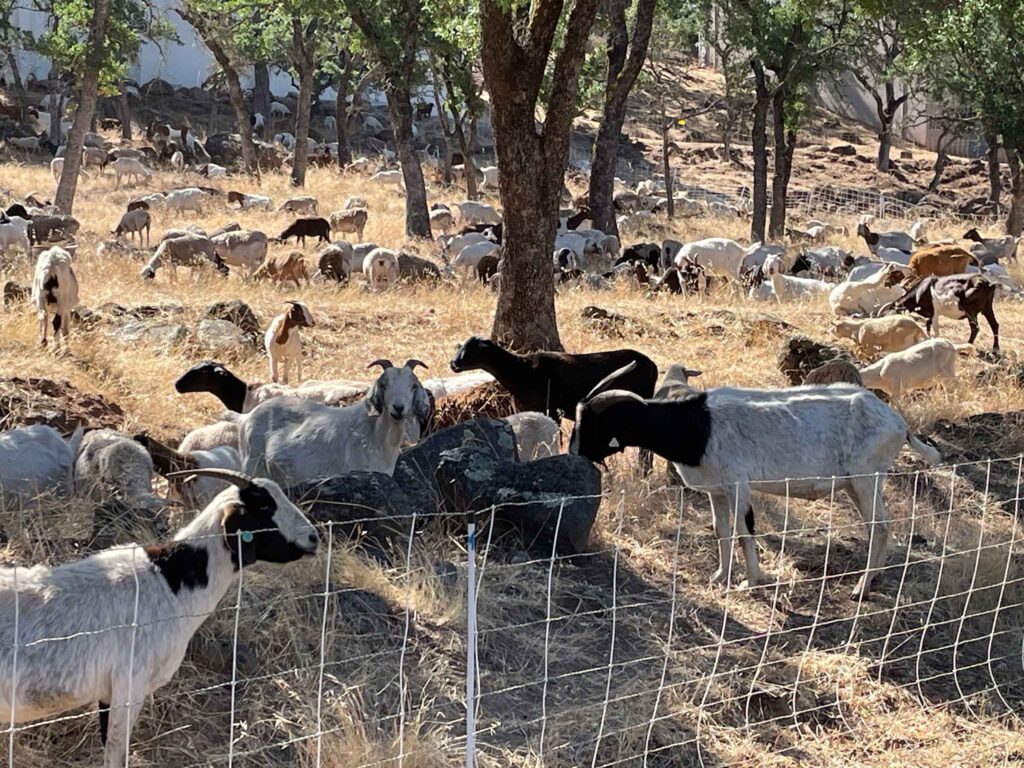By John Dunbar
California’s property insurance landscape has changed dramatically due to elevated wildfire risk and increased construction costs leading several insurance carriers to end, or significantly restrict, writing of new coverage policies.
Property owners are finding it harder and more expensive to get insurance in the wake of devastating wildfires. Following the 2017 and 2020 North San Francisco Bay firestorms, for example, some homeowners are being forced to go without coverage, while home buyers are finding it more difficult due to a shortage of full coverage policies.
In May, Napa Communities Firewise Foundation (Napa Firewise) Board Chair Christopher Thompson gave a presentation to the Napa County Board of Supervisors detailing the Napa Firewise vegetation management projects completed and planned with support from Napa County and other funders. These hazardous fuels mitigation projects reduce the risk of wildfire spread in conjunction with the vegetation management residents complete to comply with Napa County’s Defensible Space Ordinance.
Thompson referenced a March 2023 insurance industry symposium convened by Galway Holdings and its subsidiaries that brought together more than 40 insurance carriers, Napa Firewise, County officials, CAL FIRE representatives, winery leaders, fire resilience experts, and risk modelers.
Panels discussed the wildfire mitigation steps being taken at Fire Safe Council, neighborhood, and individual property owner levels throughout Napa County. Other presentations focused on providing carriers with an enhanced understanding of how wildfire risks are being mitigated. Many carriers were impressed by the investments made by the Napa community, and the broad Napa Firewise and County wildfire mitigation strategy that is being executed, Thompson reported.
Louis Reynaud, Senior Vice President of Climate Initiatives for Galway Holdings, addressed the need for a coordinated wildfire risk management effort. “Based on ongoing carrier feedback, I sense a willingness from insurers to acquire a better understanding of wildfire and to incorporate the effectiveness of large resilience investments like community fuel breaks and individual efforts at improving defensible space into their underwriting approach. To accomplish this, they need help gathering data,” Reynaud said.
Several insurance carriers that participated in the symposium are reanalyzing their risk modeling to factor in the investment being made in wildfire resilience by Napa County and Napa Firewise, highlighting the value of a coordinated plan with ongoing funding, Napa Firewise officials noted.
“Protecting Californians from deadly wildfires means everyone doing their part,” said California Insurance Commissioner Ricardo Lara. “Local actions like Napa County’s go hand in hand with my ‘Safer from Wildfires’ regulation by reducing the risks for the entire community. My new regulation is the result of listening closely to the needs of consumers and businesses and crafting common-sense, lasting solutions so every resident has insurance they can rely on.”
Lara explained that “Safer from Wildfires” is a ground-up approach to wildfire resilience with three layers of protection – for the structure, the immediate surroundings, and the community – and following these steps can help property owners save money on insurance. Learn more about “Safer from Wildfires” at https://www.insurance.ca.gov/01-consumers/200-wrr/Safer-from-Wildfires.cfm.

Napa County Fire Battalion Chief J.C. Greenberg described a new, one-of-a-kind Defensible Space Certification Program offered only in Napa County that recognizes property owners for their proactive compliance with county rules about wildfire fuels mitigation.
The certificate verifies to insurance companies that the property has passed defensible space requirements, which helps residents make their homes safer in the event of a wildfire and helps insurance companies identify the risk models for the homes they’re insuring. This allows residents and insurance carriers to work together to provide better and more affordable property insurance by mitigating wildfire risk, according to Greenberg.
During a Town Hall zoom meeting on May 30, Napa County Fire Marshal Code Compliance Officer Erick Hernandez spoke in detail about the benefits of the new Defensible Space Certification Program. Several community members shared that their insurance companies are seeing value in the compliance certification, which has led to lower costs for coverage, he said.
Fire officials are partnering with Napa Firewise, who is leading the implementation of the Napa Communities Wildfire Protection Plan adopted by the Napa County Board of Supervisors in 2021. Adding property owners to that partnership is critically important, according to Hernandez.
“When we’re looking at the fire resiliency in Napa County, this is not just the Fire Department. We are inviting you to become part of a wildfire resilient community. We’re bringing the education component, we’re bringing the tools, and we want to continue working with you to ensure that we’re ready for the next wildfire,” Hernandez told the online audience.
The City of St. Helena Fire Department established a similar defensible space certificate program, offering free site inspections and guidance on defensible space and city code requirements for any property within the city limits.
Chair Thompson added that Napa Firewise is assisting the 21 volunteer led Fire Safe Councils in Napa County to become Firewise USA certified. “Once those Fire Safe Councils are certified, a lot of insurance carriers are starting to extend insurance discounts to (residents),” he said.
Napa County’s Congressman Mike Thompson and District 1 Congressman Doug LaMalfa co-sponsored federal legislation, H.R. 4070, known as the “Disaster Mitigation and Tax Parity Act”, allowing homeowner rebates for home hardening to be tax exempt. California Senator Dianne Feinstein introduced companion bill, S. 1953, in the Senate.
“Incentivizing homeowners to invest in home-hardening measures will help to keep our communities safe from the threat of natural disasters, including wildfires and earthquakes,” Congressman Thompson said. “Napa County’s certification program for home-hardening (and defensible space) serves as an example across our country because it is clear that this program is protecting against wildfire extreme events. I introduced legislation in Congress using the tax code to incentivize resiliency and home hardening nationwide and will continue working to promote disaster preparedness and resiliency.”

Napa Firewise is administering limited cost share grants from CAL FIRE to help defray the cost of compliance, reimbursing eligible residents who create defensible space around their homes up to $3,500.
